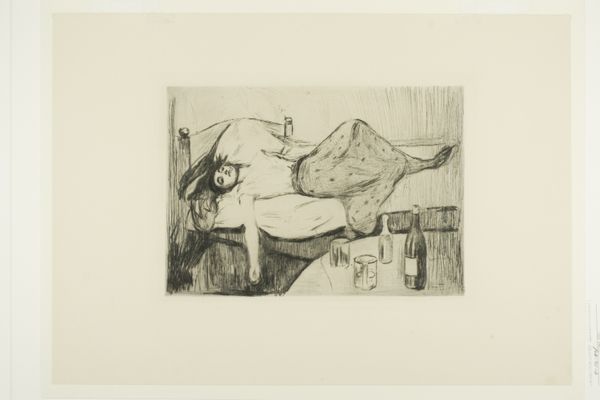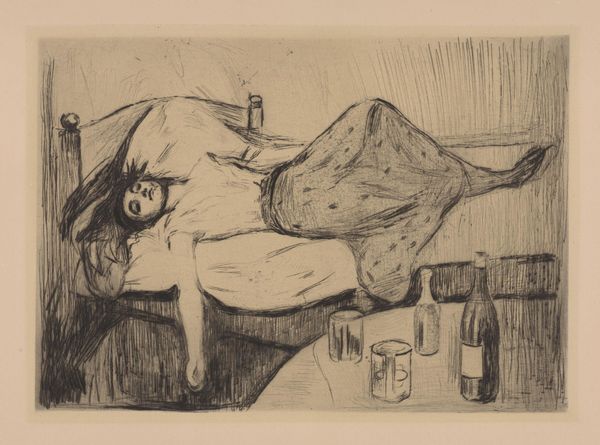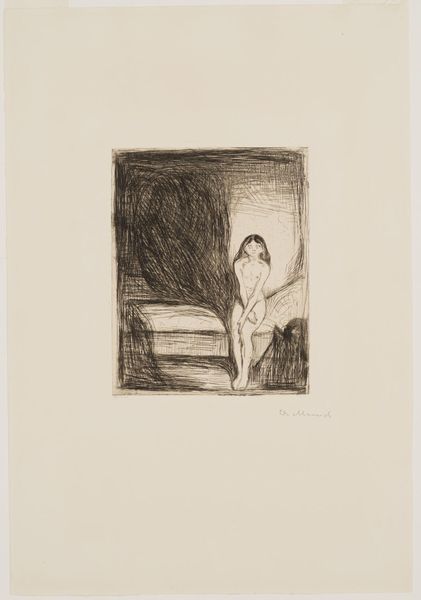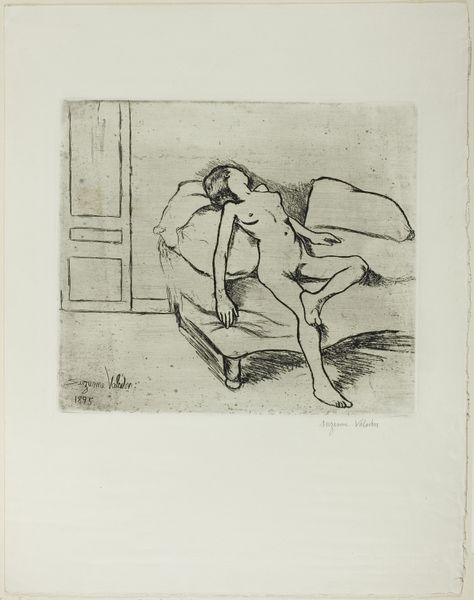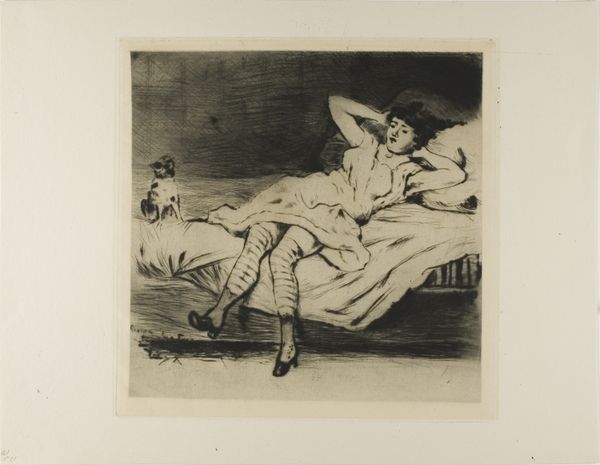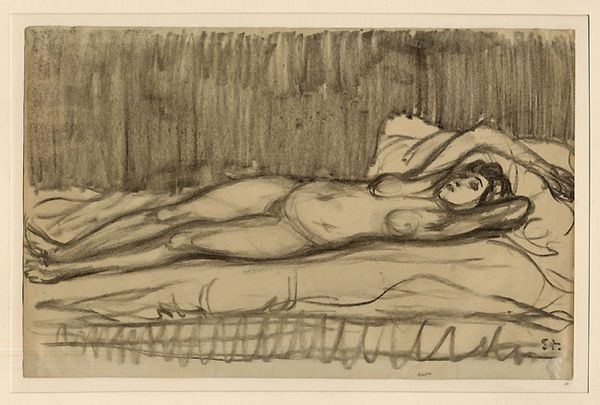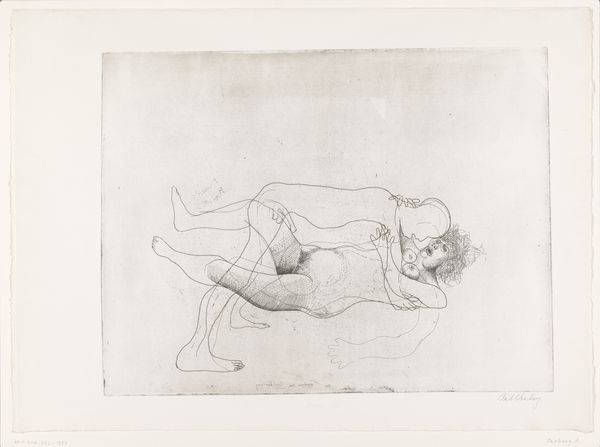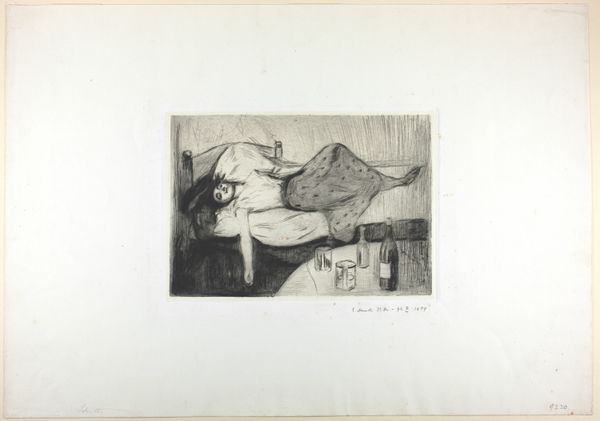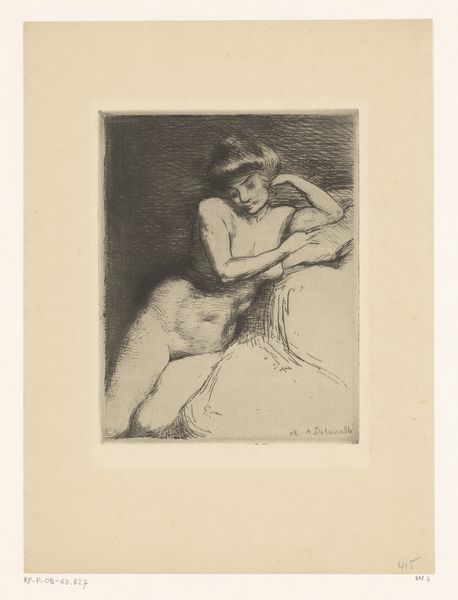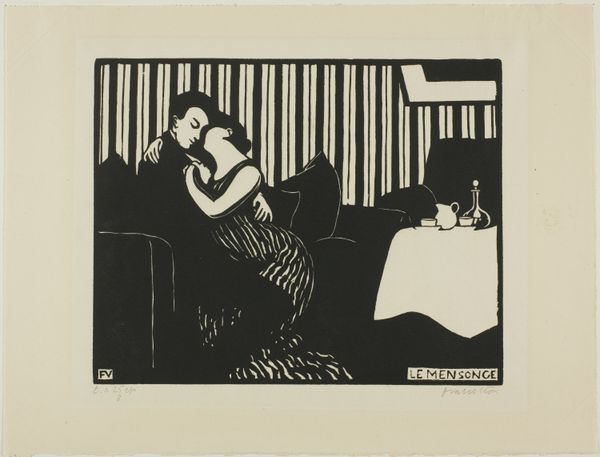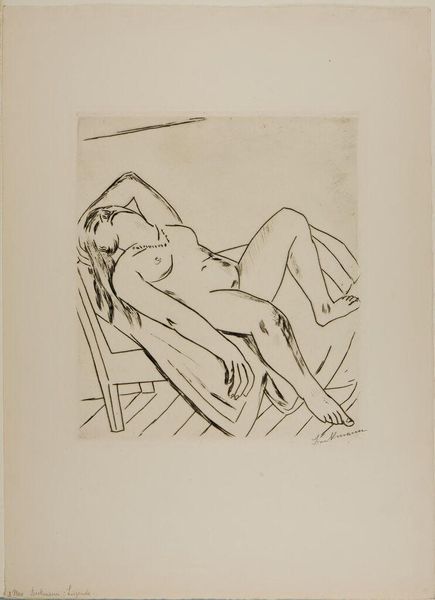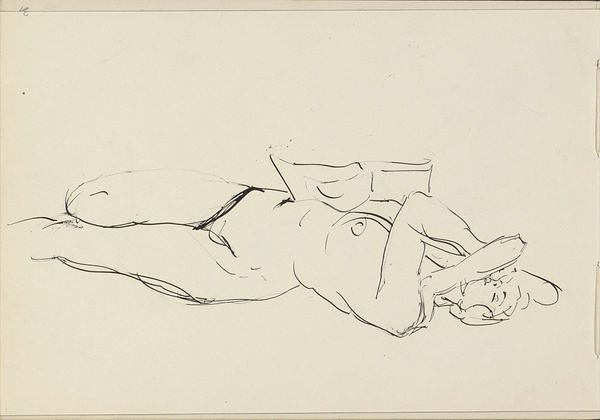
Dimensions: plate: 20.8 Ã 29 cm (8 3/16 Ã 11 7/16 in.) sheet: 33.3 Ã 47.5 cm (13 1/8 Ã 18 11/16 in.) image: 19.3 Ã 27.3 cm (7 5/8 Ã 10 3/4 in.)
Copyright: CC0 1.0
Editor: Here we have Edvard Munch’s print, "The Day After," housed at the Harvard Art Museums. It’s difficult to pinpoint the exact date, but what strikes me most is the stark vulnerability of the figure. What societal narratives do you see reflected in this piece? Curator: Well, consider the socio-cultural context of the late 19th century. Munch was operating in a society grappling with anxieties around modernity, sexuality, and the role of women. How might this scene challenge or reinforce societal expectations of women, particularly in their domestic lives? Editor: That's a great point! It definitely pushes against the idealized domesticity often portrayed. I hadn't considered the social commentary so directly. Curator: It reveals a private, perhaps shameful moment, challenging public perceptions. Seeing it in this light, what do you think Munch is trying to communicate about societal norms and individual experience? Editor: I now see a direct commentary on the pressures and realities women faced that are rarely depicted. Thank you! Curator: And thank you. It is fruitful to see how our preconceptions shape our experience.
Comments
No comments
Be the first to comment and join the conversation on the ultimate creative platform.
